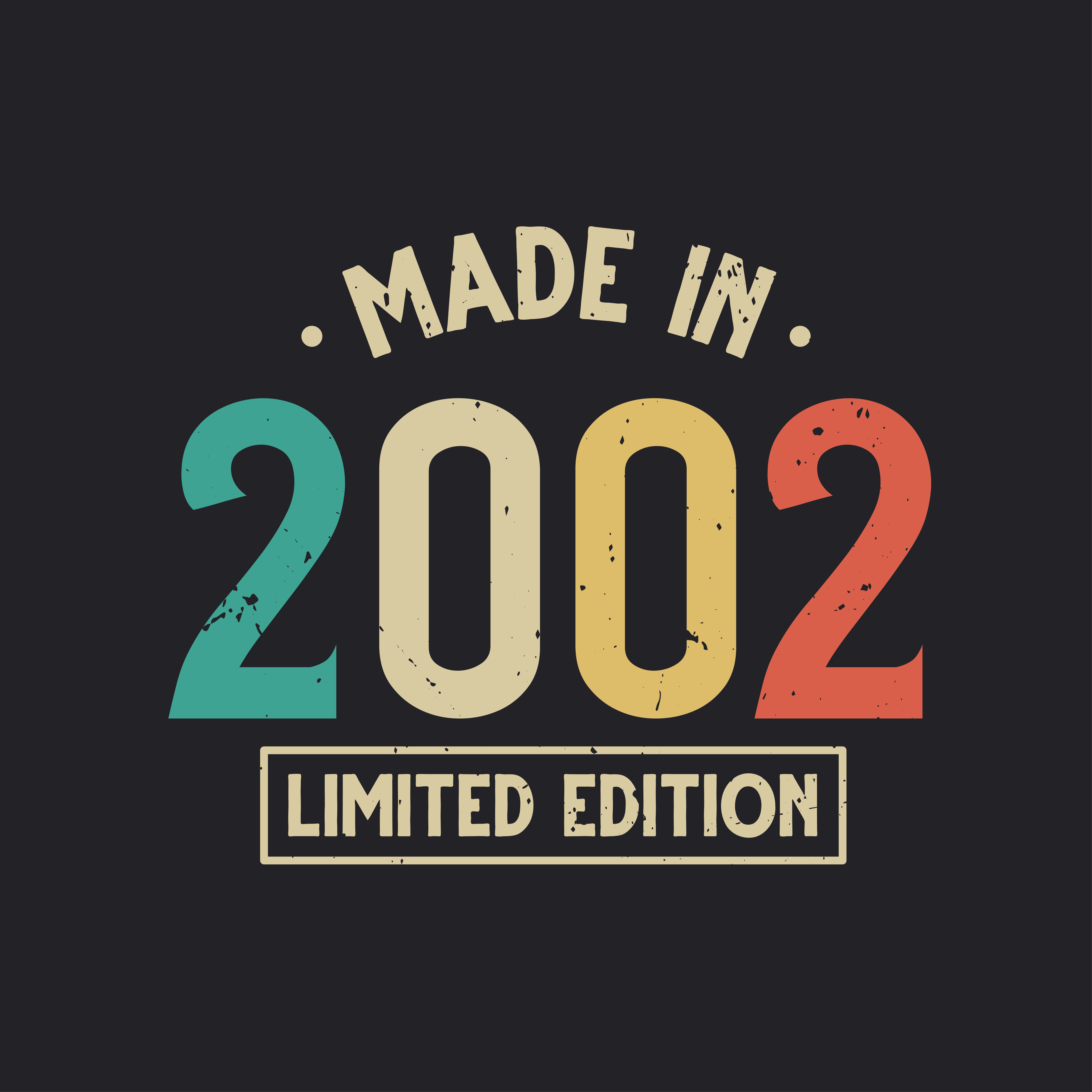Think back 20 years… yes, it was 2002 (that came around quickly, didn’t it?) What do you recall about the year?
If you’re battling to recall anything, here are some highlights…
- The Lord of the Rings – The Two Towers was one of the biggest movies of the year. To celebrate the New Zealand Post produced a range of stamps, postcards and presentation packs featuring scenes from the movie
- We were all watching Friends (Pivot! Pivot!)
- The Euro became the currency for 12 of the 15 EU members
- The Queen Mother died
- Apple released its second-generation iPod, which held 20GB of storage space (now we can’t fathom less than 256GB, right?!).
- On it, we were jamming to Avril Levigne’s Sk8ter Boi and Nickelback’s How You Remind Me.
- The average web surfer spent just 46 minutes a day online; AOL was the most popular website; and favourite web searches included Spiderman, Shakira, and Star Wars.
- It took an average of 12.5 minutes to download a song on a 56k modem, and it took 16 seconds for a web page to load (were we that much more patient back then?)
- Amazon was still a tech start-up and the creator of Facebook was still just a bright 15-year-old boy at high school, meaning two of the most influential companies today were yet to make their mark as so rightly recalled by Lucy from Business Quick Magazine
But what about the workplace?
20 years ago overhead projectors could still be located in office spaces. Albeit a bit dusty, they were there and used from time to time. (Would Gen Z’s even know what this machine looks like?) Facsimiles and paper mail were still the go-to when it came to communication. And, unfortunately, workplace harassment and discrimination was, more often than not, overlooked.
However, as technology, innovation and societal advancements have altered society, so have they manipulated the workplace, says John Mann, Managing Director at Alex & Red.
It goes without saying that one of the most impactful changes in the workplace is due to the advancements of technology.
Communication in the office use to mean calling over the desktops or popping in to a neighbouring office, but this is no longer the case, due to technology. Many offices are now wireless, paperless and all-out digital spaces. As CRM came in, business cards went out; as the cloud came in, filing systems and floppy discs went out; as emails and WhatsApp came in; paper mail went out; as Zoom came in, face-to-face meetings went out.
Technology has also allowed for a more flexi/WFH approach to work. However, this may have been pushed due to the most recent impact of the global pandemic.
Although many of us have Covid fatigue and don’t really want to mention the C word – it has to be said that it has impacted the workplace – and rapidly. Many employees are working from home on a far more flexi basis than ever before. Some companies have adopted a schedule of some days in the office/ some days WFH approach. Before the global pandemic many workplace’s may have never even considered a WFH/ Flexi approach. The mindset was, very often, that employees needed to have ‘bums on seats’ (or a ‘clocking-in’) to get any work done. In reality, in many companies, this has been proven to be incorrect (depending on the nature of the work, of course). Going forward it is likely offices will downsize or use space differently – perhaps wellness areas as a growing awareness of the importance of looking after the mental health of employees evolves (another workplace change since 2002).
Hand in hand with the flexi approach came a surge in freelancing. Studies suggest that if the current pace continues, 50% of workers in the United States will be freelancing within the next ten years. And New Zealand will be much the same. Jaime Alexandra Neely, Chief Culture Officer at Trend Hunter, says that, for many young people, the perks of flexibility, autonomy, control and varied experience outweigh the traditional benefits of full-time employment including steady income, paid vacation and health care.
Where we have not made enough progress is with diverse, equal and harassment-free workplaces. At least the conversations are now open – which is a step in the right direction. Many women now work in white-collar roles, but top executive roles are still dominated by men. According to Heidrick and Struggles, globally, women made up only 5% of the CEOs appointed in 2020. It is clear that more work needs to be done here.
Having an open mind and allowing your workplace to evolve with changes in technology and society will mean you don’t only keep up to date with new advancements, you also make the workplace a positive place to be and, in turn, create employee satisfaction and retention.
Need more advice, tips and guidance? Give us a call or drop us a line to chat about your business, the workplace environment you currently have and next steps in keeping it current.
References
Business Quick:
https://bq-magazine.com/how-has-the-workplace-changed-in-the-last-20-years/
Heidrick and Struggles:
John Mann:
Trend Hunter:

